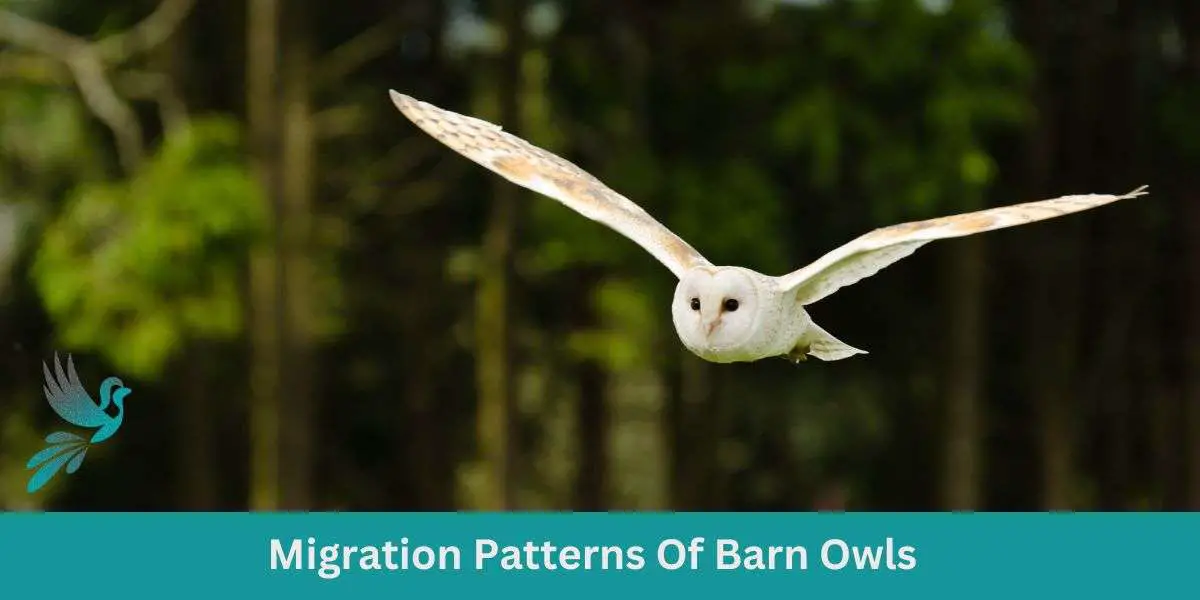With a ghostly appearance and silent flight, barn owls have been subjects of wonder and intrigue for centuries. These iconic birds, characterized by their heart-shaped faces, play a pivotal role in controlling pest populations.
But beyond their nightly hunts, some populations undertake journeys influenced by various ecological factors. Let’s delve into the migration patterns of barn owls and the mysteries they hold.
Migration Patterns of Barn Owls
Barn Owls are known for their exceptional ability to migrate across vast distances in search of suitable habitat and food sources. These magnificent birds have fascinating migration patterns that have been the subject of scientific research and observation for many years. Understanding the migration behavior of Barn Owls is crucial for conservation efforts and ensures the protection of their habitats along their migration routes.
Migration behavior in Barn Owls is primarily driven by the availability of prey and suitable nesting sites. These nocturnal birds are opportunistic hunters, relying on small mammals like mice, voles, and shrews for sustenance. As their preferred prey migrates or becomes scarce in certain regions, Barn Owls are compelled to follow the availability of food sources. Juvenile dispersal patterns can vary.
Factors Influencing Migration
Several factors influence the migration of Barn Owls. One of the most significant factors is the changing seasons. As winter approaches, the Barn Owls that reside in colder regions move towards warmer areas where prey is more abundant.
- Food Scarcity: A decrease in the availability of prey like rodents can drive barn owls to seek richer hunting grounds.
- Weather and Temperature: Severe winter conditions can impact both the owls and their prey, prompting migration.
- Breeding Considerations: Some owls may move to areas that provide better nesting opportunities and food availability during breeding seasons.
The availability of suitable nesting sites, such as abandoned buildings or tree cavities, influences their migration patterns. Barn Owls are highly adaptable and will migrate to areas where they can find suitable locations to raise their young.
Sedentary vs. Migratory Populations:
- While many barn owl populations remain sedentary, some populations, especially those in northern and colder regions, may migrate to warmer areas during winter.
Barn Owls usually begin their migration in late summer or early autumn, just before prey abundance begins to decrease in their current location. By timing their migration, these birds ensure they have enough time to settle in new areas and establish territories before breeding season begins.
The migration routes of Barn Owls vary depending on their geographic location. In North America, Barn Owls may migrate along the eastern coast or across the Great Plains, while in Europe, they may migrate from the northern regions to the Mediterranean. These routes are shaped by geographical features, prevailing winds, and the availability of suitable habitats along the way.
Migration Distances
Barn Owls are capable of covering great distances during their migration journeys. In North America, they may travel thousands of kilometers from their breeding grounds in Canada to overwintering areas in Mexico. Similarly, European Barn Owls can undertake long migrations, crossing vast distances to reach their wintering grounds in southern Europe and North Africa. The ability of these birds to cover such extensive distances showcases their remarkable adaptability.
While Barn Owls are not known for their swift flying abilities, they can cover considerable distances during migration. On average, Barn Owls fly at speeds of around 40-50 kilometers per hour, making them efficient long-distance travelers. This moderate speed ensures they conserve energy while still making progress towards their destination.
During migration, Barn Owls must adapt their feeding strategies to ensure they have access to enough food for sustenance. As they travel, they rely on opportunistic hunting, taking advantage of any available prey along their migratory routes. This flexibility allows them to adjust their diet according to the availability of prey in different areas, ensuring they can maintain their energy levels throughout the journey.
Barn Owls are generally solitary birds; however, they may exhibit increased social behavior during migration. As they travel in groups or encounter other migrating individuals, they may engage in vocalizations and displays to communicate with each other.
These interactions may help establish hierarchy among individuals and facilitate group movement. Social behavior during migration can also aid in finding suitable nesting sites and foraging grounds.
Conservation Challenges
The migration patterns of Barn Owls bring forth several conservation challenges. Loss of suitable nesting sites due to human activities, such as urban development and deforestation, can disrupt their migration routes.
The use of pesticides, which can accumulate in owl prey, poses a threat to these birds during migration and in their breeding grounds. C
onservation efforts should focus on preserving suitable habitat and creating safe corridors along their migration routes to ensure the survival of Barn Owls during their annual journeys.
The migration patterns of barn owls are a testament to the resilience and adaptability of these mesmerizing creatures. By shedding light on their journeys, we not only deepen our understanding of their life cycle but also emphasize the interconnectedness of ecosystems across regions.
As we continue to decipher the secrets of their migrations, we are reminded of the delicate balance of nature and the role each species, no matter how elusive, plays in the grand tapestry of life. Join us in championing the conservation efforts that ensure barn owls continue to grace our skies for generations to come.


Leave a Reply
You must be logged in to post a comment.